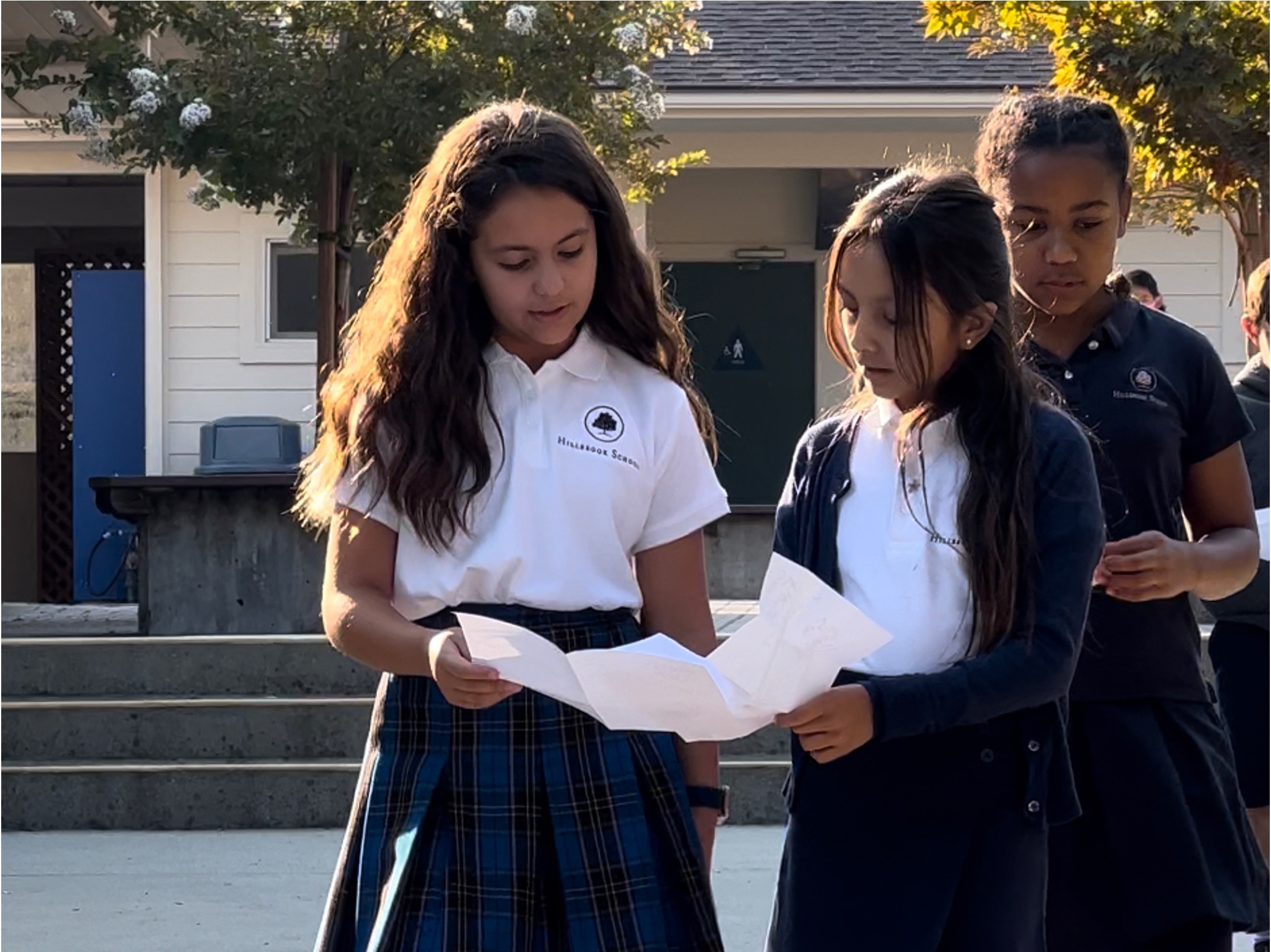“Well, I knew the answer would be a whole number and if I start with a whole number, the answer will be a whole. So that’s why I think you start with the [whole] number then the fraction.”
5th Grade Mathematicians prepare to take their unit-end test next week on multiplying and dividing fractions. Using our Illustrative Math core text, students develop deep conceptual understanding of what fractions are and, in this unit, extend their earlier learning about fractions to include multiplying fractions by fractions and dividing a whole number by a unit fraction. They do this using both algorithms and diagrams! Can you draw how many one-thirds are in four? Or what it looks like to divide 8 by one quarter? Students learn to interpret ½ ÷ 5 to mean finding the size of one part if ½ is split into 5 equal parts. And, to interpret 5 ÷ ½ as a way of finding how many ½s are in 5.
As part of their day of in-class review, students each presented a different “poster problem” to a few peers, explaining their problem and how their diagram and their expression both arrive at the answer. They practiced process skills like representing their thinking visually, and critiquing their own and others’ reasoning—including, in one funny instance, their teacher’s reasoning! “Ms. TK, you gotta slow down! You’re messing up!”
Ms. TK, you gotta slow down! You’re messing up!
And in Challenge group this week, students who have already mastered much of this content worked on another opportunity: using each of the digits in 2024 exactly one time, in any order with any symbol or operation, create expressions equivalent to the numbers 1-100. In this problem-solving challenge, students shared terms like concatenation and used strategies including grouping, decimals, square root, and factorial. We’re so proud of our students’ perseverance and flexible math thinking, and the ways all students contribute to the math community.

